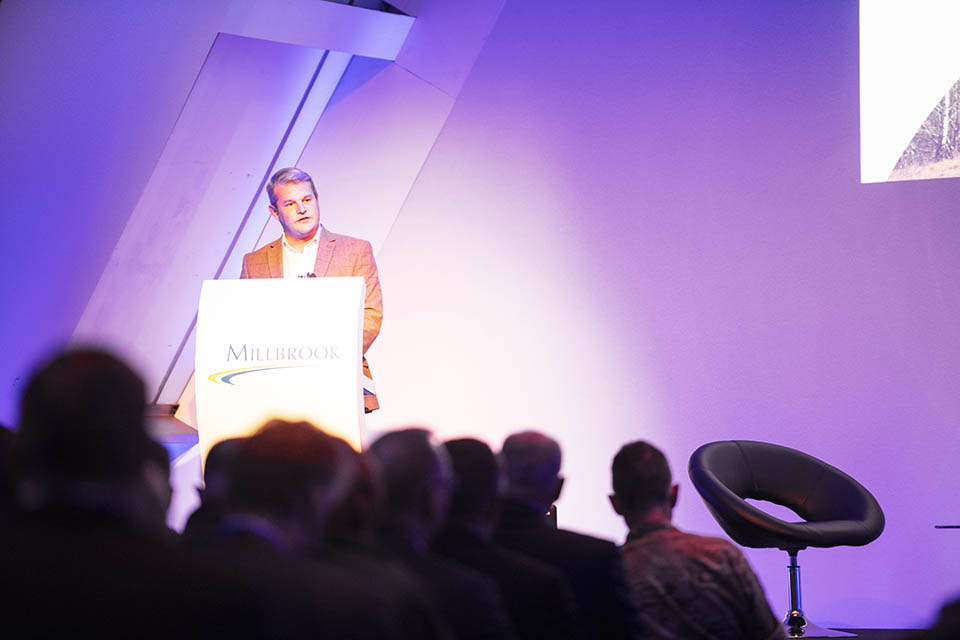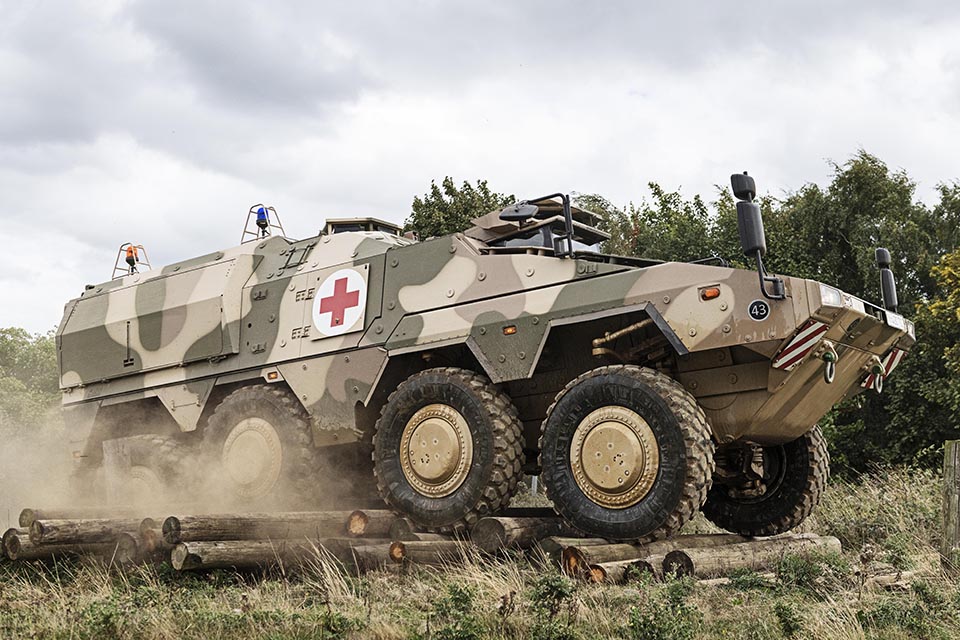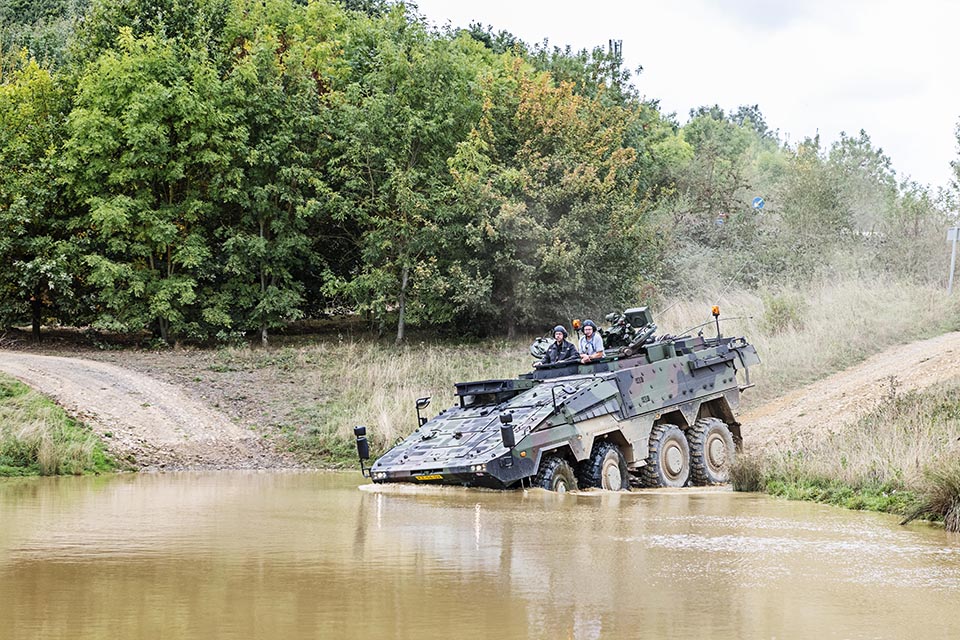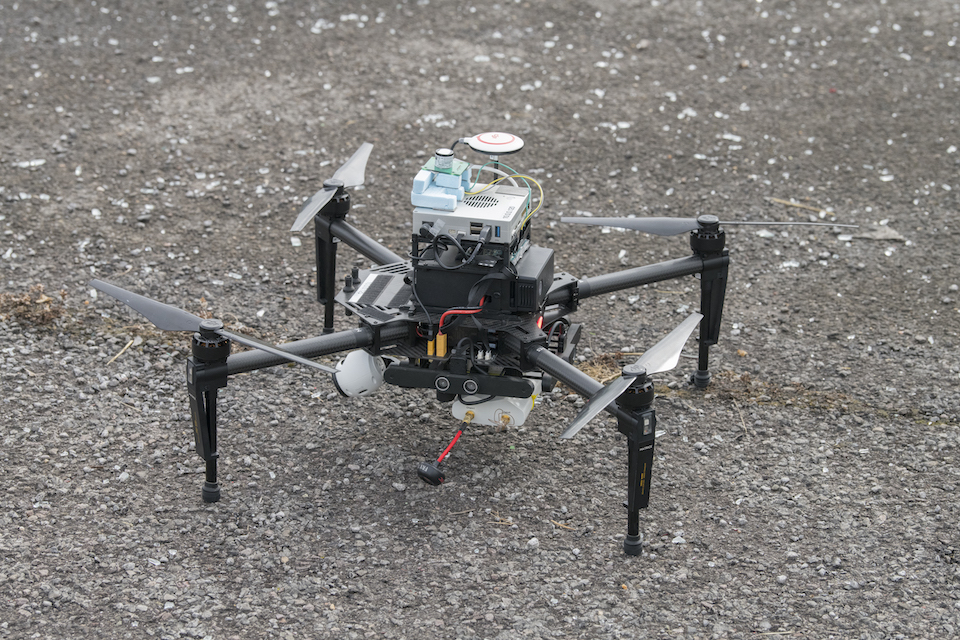Speech: Defence Minister Stuart Andrew at DVD18, Millbrook
Let me begin with a few thank yous. First to Millbrook for hosting this event. I’ve now been in the job for a couple of months but I’m still coming to terms with the Army jargon. I thought DVD had something to do with movies! Fortunately, my delight at seeing Great British capability in action from Warrior to Wolfhound, Bulldog to Mastiff…has yet to be diminished or dented.
And there’s no finer place to see some of that capability up close than the Millbrook Proving Ground. Earlier today I had the chance to ride in both a JLTV and Boxer. I’m glad my office told me not to wear a suit today. And it was much less bumpy than the Land Rover I encountered beforehand.
Next I want to thank that battalion of people who operate, design and build this fantastic kit. This year we recall several anniversaries where the intervention of Defence vehicles proved decisive. At the Battle of Amiens 100 years ago…500 tanks helped punch a hole in the enemy lines and allowed the Allies to advance an unprecedented eight miles on the Western Front…delivering the hammer blow to enemy morale. And 75 years ago tanks from the British Eighth Army advanced into Tunisia catching the Axis unawareness and forcing the Nazi surrender.
Today our cavalry continue coming to our nation’s rescue….mobilising to deter Russian aggression in Eastern Europe…bringing humanitarian aid to sub-Saharan Africa and the hurricane-hit Caribbean islands…as well as providing vital assistance…closer to home… in the Salisbury clean-up operation – after British citizens were callously targeted by agents wielding Novichok.
Finally, I want to thank DE&S. Whether navigating contractual complexities, overcoming logistical obstacles, or engineering ingenious solutions… you do a magnificent job in often tricky and trying circumstances.
But today our focus is not on land vehicles past or present but on the future and it strikes me that three points, in particular, are of relevance.

1. LAND POWER AS VITAL AS EVER
First and foremost as generals, strategists and experts all agree, and as the impressive attendance at this conference confirms, land power is as important as it’s ever been.
Technology might be advancing apace.
We might be witnessing the advent of cyber and Artificial Intelligence.
But wars are still won and lost in the land domain.
We will still look to land forces to guard borders, confront aggression, seize hostile territory and deny its access to the enemy.
At the same time, we shouldn’t forget that this environment is also worth its weight in gold.
Not only does it bring in hundreds of millions for the British economy but it sustains the livelihoods of thousands up and down the country, directly and indirectly through the supply chain.
2. INNOVATION CRITICAL
However, my second point is that land power must continue to evolve and…as the title of this conference reminds us…innovate. If you happen to glance at the Army’s vision for Joint Force 2030 you’ll find a focus on making the most of technological opportunities.
It’s about maturing our cyber and information capabilities to enhance our prowess.
Wireless routers, satellites, computer networks, cyber space, radar and sensors give us the ability to up our situational awareness and maintain a high tempo over an increasingly dispersed and complex battlespace.
Enhancements in ISTAR allow us not just to target an enemy’s engaged forces but their uncommitted forces too.
Autonomous platforms and AI give us the wherewithal to replace soldiers for the most dangerous tasks… or reduce our dependence on deep logistic lines…so we can make better use of our forces.
All the while we have to be ever on our guard against adversaries seeking to exploit our weaknesses in the electromagnetic spectrum and control the bandwidth of the battlefield
But innovation extends beyond purely technological solutions. It’s about becoming more versatile. In a more unpredictable age, our Army are having to cope with increasing demands and a broader set of challenge.
In Iraq and Syria…we’ve seen how our enemies are adopting ever more ingenious methods to attack us – from trucks laden with bombs to commercially sourced drones packed with explosives that attack us in swarms.
Nor are today’s threats just coming from extremists but from state aggressors, from lone wolf attackers, even from extreme weather events.
And versatility must be complemented by speed. In this age of constant flux, the dangers come from out of the blue, from any direction, so we must have the right vehicles, ready to move at moment’s notice.
3. WE’RE ON THE CASE
Britain is on the case. Our nation has always had long history of innovation in the land domain.
Richard Edgeworth came up with the caterpillar track almost 250 years ago.
James Boydell devised the delightfully named “Dreadnaught Wheels” back in 1856.
And in 1901, British inventor Frederick Simms produced a design for a motor-war car. All these ideas …and more…were blended by British engineering genius under Churchill’s watchful eye…until they became the tank…which as we’ve already seen helped shorten the Great War. But to succeed in a new age of warfare we’re going need to get even more creative.
That’s why we’re investing in next-generation capability like AJAX. A step change in armoured fighting vehicle. It possesses the capacity to hoover up data from all domains and detect invisible signs of cyber disturbance.
Army experimentation continues and I know they are eagerly awaiting the delivery of production vehicles to continue their exciting journey towards operational capability
However, this is only the tip of the iceberg. A much wider capability renewal is underway in the land domain.
In May, my predecessor announced that the UK was re-joining the BOXER eight wheeled armoured Vehicle Programme…to equip our new STRIKE Brigades with a Mechanised Infantry Vehicle (MIV).
I am pleased to inform you that we issued the formal Request for Quotation on Friday. That means ARTEC, the consortium who lead on the production of BOXER, will now be able to complete supplier selection and confirm proposals to manufacture and support BOXER from the UK.
Work on our UK Multi-Role Vehicle – Protected (MRV-P) programme…to support our STRIKE brigades…is also proceeding alongside our Modernising Defence Programme.
Meanwhile, we’re buying autonomous robots which we had the pleasure of seeing today. Specifically, spending £55m for 56 STARTER bomb disposal robots.
These neat bits of kit use advanced haptic feedback’ to allow operators to ‘feel’ their way through the intricate process of disarming from a safe distance, protecting UK personnel from threats such as roadside bombs.
The first 2 robots have been delivered and are successfully undergoing trials. All 56 robots are due to be delivered to the UK and be in service by the end of 2020.
And we’re investing in sophisticated systems like Defence Targeting Toolset (DTT).
By allowing users…whether based in theatre or back in the UK…to see exactly the same thing…this remarkable piece of software enables Military Targeteers to co-ordinate Land and Air strikes against enemy targets more effectively…improving the speed and accuracy of decision making in complex targeting situations.
In addition, we’re introducing several new projects
We’re creating a Next Generation Weapon Locating System (NGWLS) that will sustain our capability to detect, acquire, track and assess current and future Land Environment indirect fire threats.
And we’re bringing in new Mobile Fires Platform (MFP) that provide our Army with a 155mm artillery capability…embracing 21st century technology…capable of supporting both Divisional deep fight and Strike.
Repurposing old kit
But we’re not just evolving new technology…we’re repurposing old equipment. As you’ve wandered through the displays here today, you may have come across our Enhanced Palletised Load System or EPLS, which will form the logistic backbone of the British Army, rapidly loading and unloading flatracks or containers.
We’ve placed a contract with MAN truck and Bus to convert 382 of our MAN SV vehicles…the workhorse of our fleet…into EPLS. The one you see here today is the first.
From a workhorse to a Warrior. We’re running a programme to improve our Warrior vehicles’ lethality, survivability, situational awareness and electronic architecture.
Most importantly, it will equip this Armoured Infantry Vehicle with Fire on the Move technology: a game-changing capability. Eleven Demonstration Vehicles have been delivered to the Army’s facilities at Bovington where personnel are currently conducting trials.
And from Warrior to Challenger 2…the UK’s only guaranteed 24-hour, all weather mobile, protected precision direct fire, anti-tank, manoeuvre capability. Challengers have been bastions of our Army from the dark days of the Cold War.
Our Life Extension Programme for the Challenger 2 main battle tank is proceeding apace. Designs are rapidly maturing which will inform an anticipated main gate decision next year.
People and partnerships
Finally, innovation is about much more than technology. It’s about people and partnerships. Ultimately, we can’t drive anything off the production line unless Government, Armed Forces and our suppliers pull in the same direction.
So the more we can do to talk to each other, to understand our requirements and to discern the art of the possible… the better the kit we can make. That’s why events like today…bringing together 250 individuals from right across our enterprise… are so important.
CONCLUSION
So innovation will keep our Army and our nation on the road. But let me end on this point. Innovation is also a product of inspiration.
If we want to make sure our vehicles remain at the cutting edge in future we’re going to need to inspire new generations of Edgeworth’s, Boydell’s and Simms.
That’s why MOD is not only championing 2018 as a Year of Engineering but this DVD, for the first time ever, welcoming University Technical College engineering students and staff.
I know from my own experience wandering the displays that…when you see what people are capable of…when you talk to those who’ve actually made this incredible capability and when you hear about how it makes a difference worldwide…it cannot help make you want to get involved.
So I hope you enjoy the day and that it whets your appetite to enter this industry. And I very much look forward to the day you come back here…not as students but as masters…showing off your latest inventions….and driving Britain’s fortunes to even greater heights.





